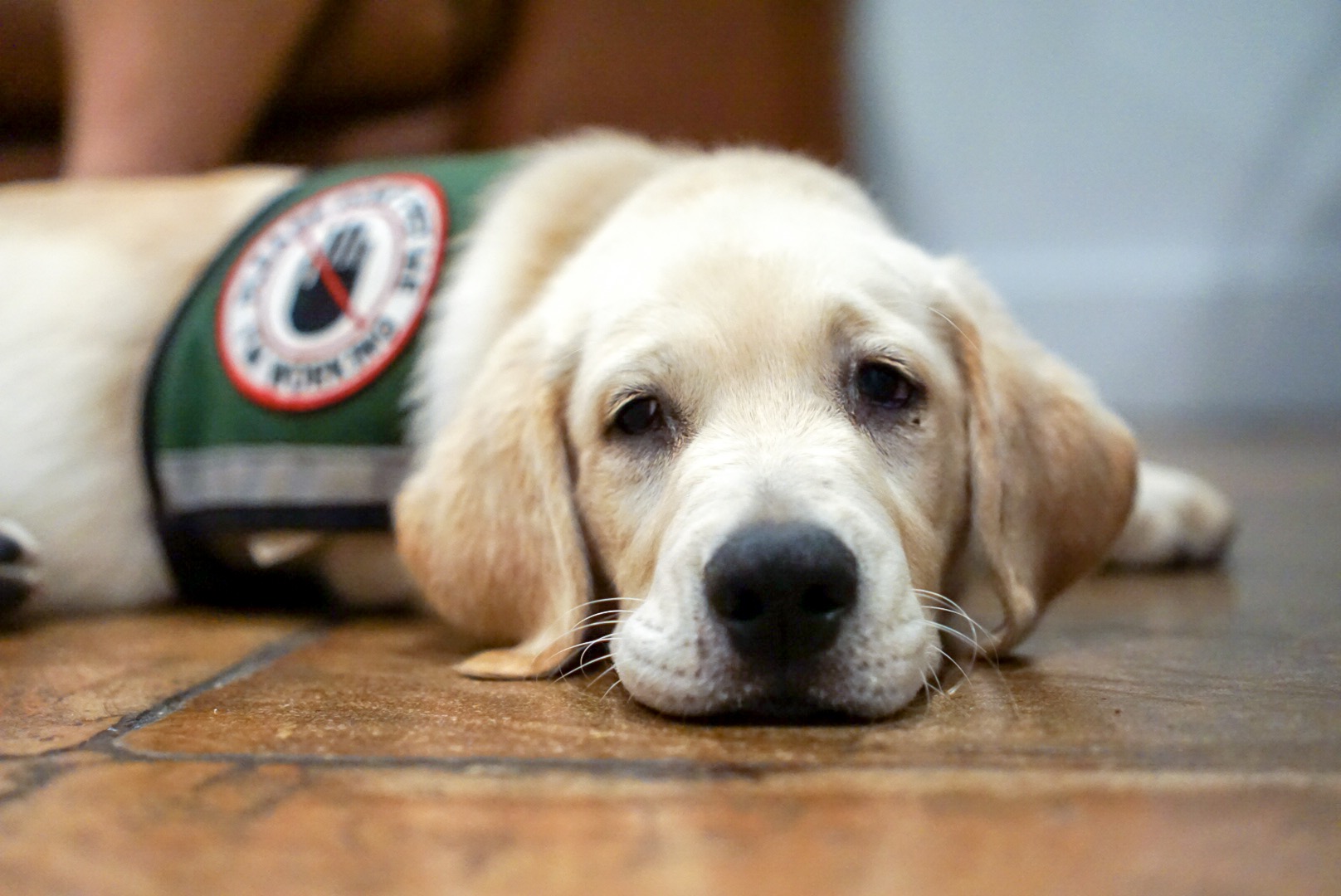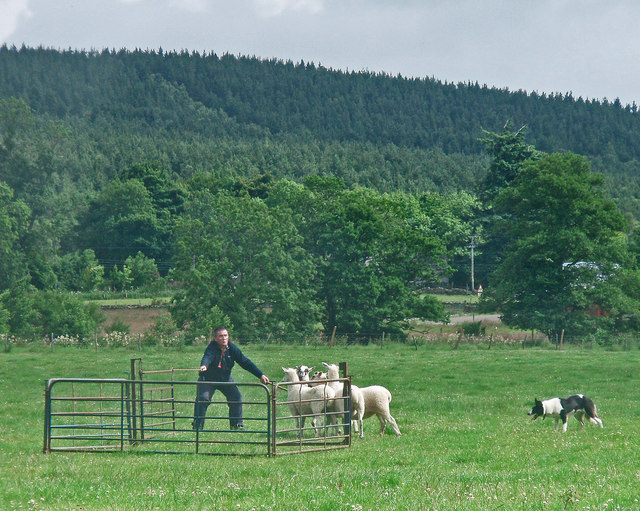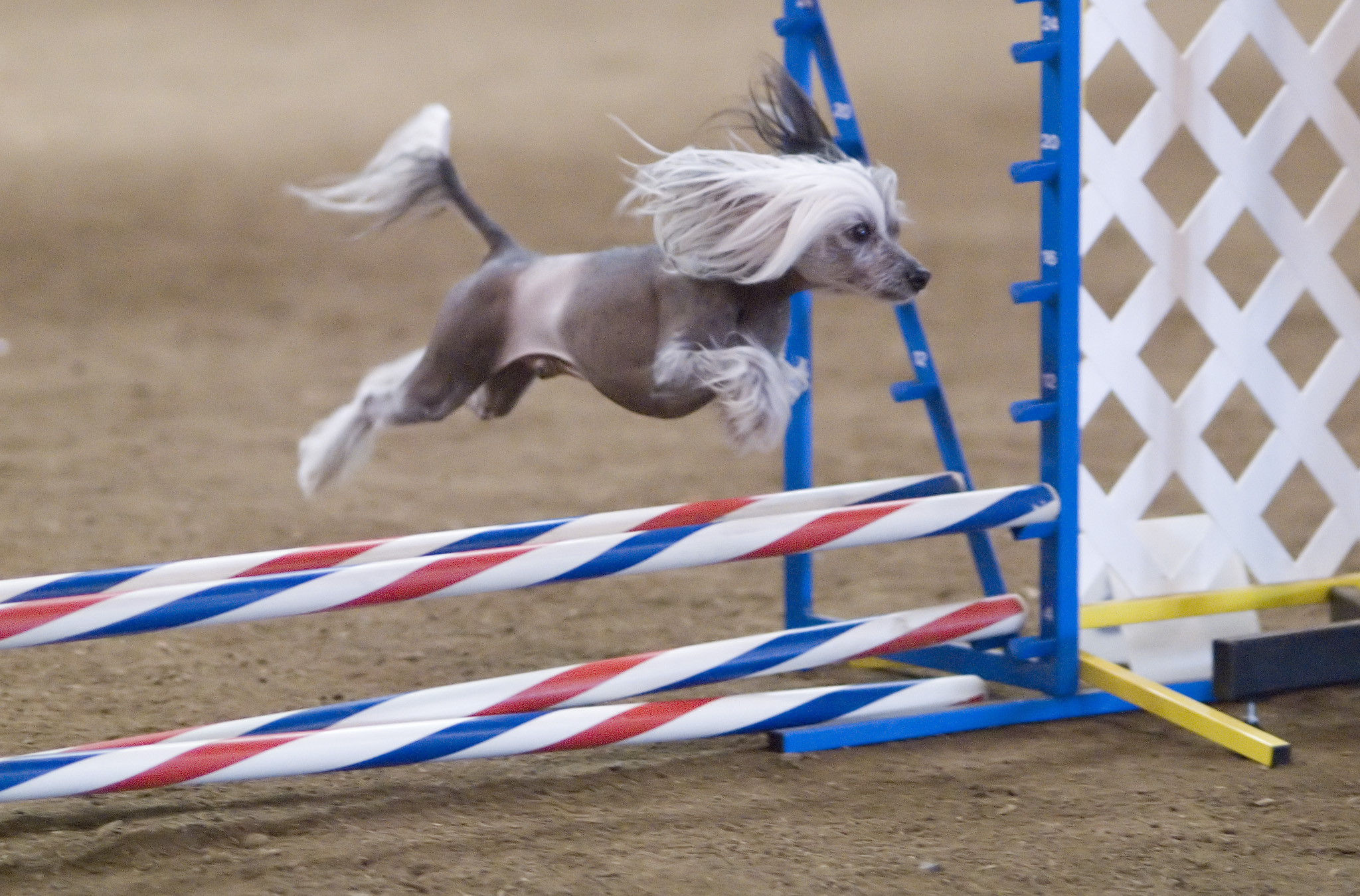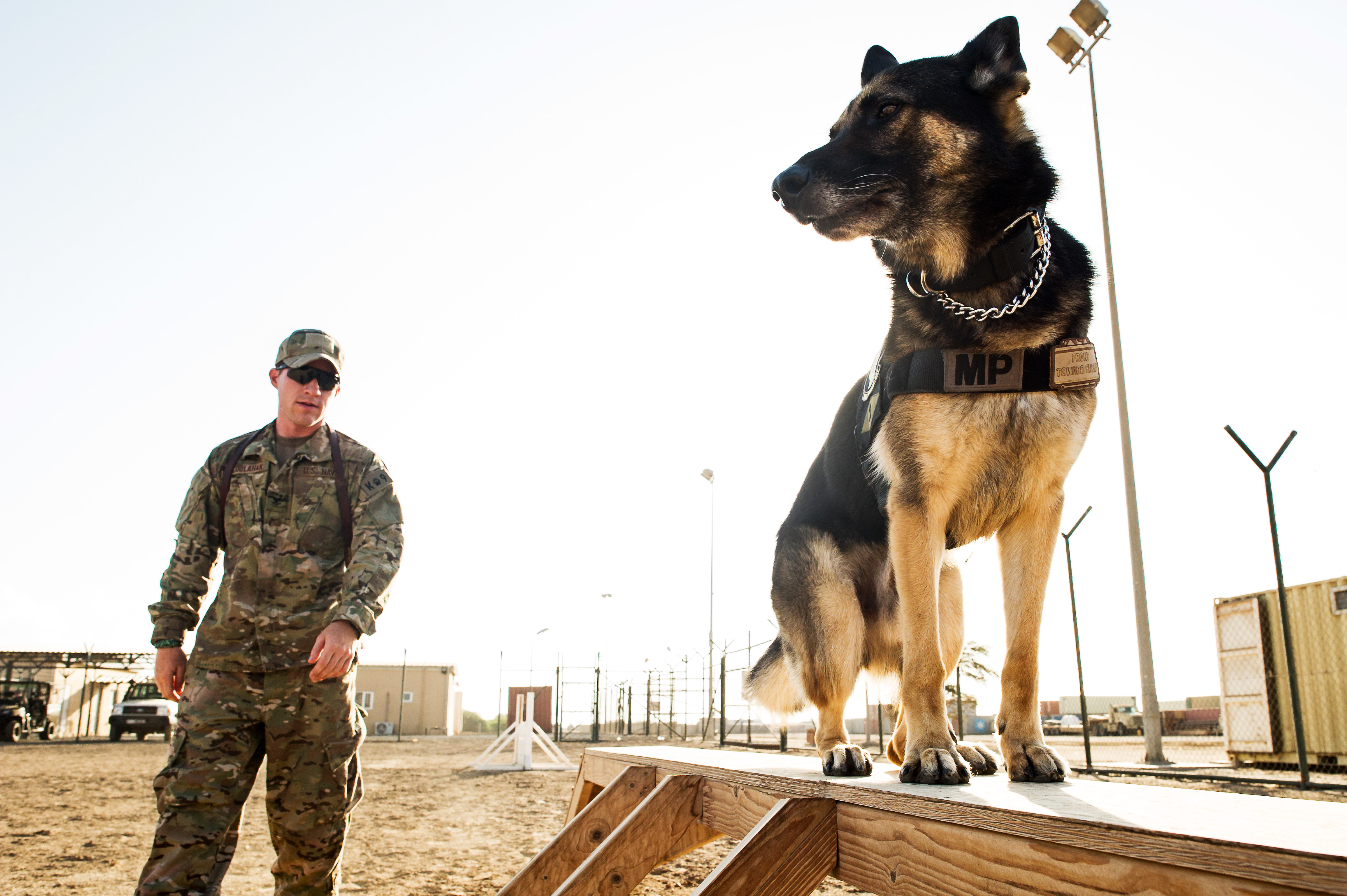|
Smooth Collie
The Smooth Collie is a breed of dog developed originally for herding. It is a short-coated version of the Rough Collie of Lassie fame. Some breed organisations consider the smooth-coat and rough-coat dogs to be variations of the same breed. History The early history of the Smooth Collie, like that of many dog breeds, is a matter of speculation. Even the origin of the breed's name is unclear, variously claimed to describe the early shepherd dog's dark colour ("coaly") or derived from the name of a breed of sheep with black faces once commonly kept in Scotland ("Colley") or derived from an Anglo-Saxon word meaning "useful." The word could also trace to Gaelic or/and Irish - in which the words for "doggie" are, respectively, ''càilean'' and ''coileán''. This would be more consistent with the breed's origin in the Gaelic-speaking Scottish Highlands than an Anglo-Saxon term. The modern history of both the Smooth and Rough Collie began in the reign of Queen Victoria, who became ... [...More Info...] [...Related Items...] OR: [Wikipedia] [Google] [Baidu] |
Scotland
Scotland (, ) is a country that is part of the United Kingdom. Covering the northern third of the island of Great Britain, mainland Scotland has a border with England to the southeast and is otherwise surrounded by the Atlantic Ocean to the north and west, the North Sea to the northeast and east, and the Irish Sea to the south. It also contains more than 790 islands, principally in the archipelagos of the Hebrides and the Northern Isles. Most of the population, including the capital Edinburgh, is concentrated in the Central Belt—the plain between the Scottish Highlands and the Southern Uplands—in the Scottish Lowlands. Scotland is divided into 32 administrative subdivisions or local authorities, known as council areas. Glasgow City is the largest council area in terms of population, with Highland being the largest in terms of area. Limited self-governing power, covering matters such as education, social services and roads and transportation, is devolved from the ... [...More Info...] [...Related Items...] OR: [Wikipedia] [Google] [Baidu] |
Merle (coat Color In Dogs)
Merle is a genetic pattern that can be in a dog's coat. Merle comes in different colors and patterns and can affect all coat colors. The merle gene creates mottled patches of color in a solid or piebald coat, blue or odd-colored eyes, and can affect skin pigment as well. There are two general types of colored patches that will appear in a merle coat: liver (red merle) and black (blue merle). Some breeds that can be affected by this genetic trait are Carea Leonés, Australian Shepherds and Catahoula Leopard Dogs. This genetic trait should be taken seriously when breeding merles. Health issues are more typical and more severe when two merles are bred together, so it is recommended that a merle be bred with a non-merle dog of any other color. Description Merle can affect all coat colors. The merle forms of brown and black are usually called "red" (though this is not correct; red and brown are genetically different) and "blue" as patches of blue are formed throughout the coat. ... [...More Info...] [...Related Items...] OR: [Wikipedia] [Google] [Baidu] |
Heartworm
''Dirofilaria immitis'', also known as heartworm or dog heartworm, is a parasitic roundworm that is a type of filarial worm, a small thread-like worm, that causes dirofilariasis. It is spread from host to host through the bites of mosquitoes. There are four genera of mosquitoes that transmit dirofilariasis, ''Aedes'', ''Culex'', ''Anopheles'', and ''Mansonia''. The definitive host is the dog, but it can also infect cats, wolves, coyotes, jackals, foxes, ferrets, bears, seals, sea lions and, under rare circumstances, humans. Adult heartworms often reside in the pulmonary arterial system (lung arteries) as well as the heart, and a major health effect in the infected animal host is a manifestation of damage to its lung vessels and tissues. In cases involving advanced worm infestation, adult heartworms may migrate to the right heart and the pulmonary artery. Heartworm infection may result in serious complications for the infected host if left untreated, eventually leading to death ... [...More Info...] [...Related Items...] OR: [Wikipedia] [Google] [Baidu] |
Ivermectin
Ivermectin (, '' EYE-vər-MEK-tin'') is an antiparasitic drug. After its discovery in 1975, its first uses were in veterinary medicine to prevent and treat heartworm and acariasis. Approved for human use in 1987, today it is used to treat infestations including head lice, scabies, river blindness (onchocerciasis), strongyloidiasis, trichuriasis, ascariasis and lymphatic filariasis. It works through many mechanisms to kill the targeted parasites, and can be taken orally, or applied to the skin for external infestations. It belongs to the avermectin family of medications. William Campbell and Satoshi Ōmura won the 2015 Nobel Prize in Physiology or Medicine for its discovery and applications. It is on the World Health Organization's List of Essential Medicines, and is approved by the U.S. Food and Drug Administration as an antiparasitic agent. In 2018, it was the 420th most commonly prescribed medication in the United States, with more than 100,000 prescriptions. ... [...More Info...] [...Related Items...] OR: [Wikipedia] [Google] [Baidu] |
Mdr1
P-glycoprotein 1 (permeability glycoprotein, abbreviated as P-gp or Pgp) also known as multidrug resistance protein 1 (MDR1) or ATP-binding cassette sub-family B member 1 (ABCB1) or cluster of differentiation 243 (CD243) is an important protein of the cell membrane that pumps many foreign substances out of cells. More formally, it is an ATP-dependent efflux pump with broad substrate specificity. It exists in animals, fungi, and bacteria, and it likely evolved as a defense mechanism against harmful substances. P-gp is extensively distributed and expressed in the intestinal epithelium where it pumps xenobiotics (such as toxins or drugs) back into the intestinal lumen, in liver cells where it pumps them into bile ducts, in the cells of the proximal tubule of the kidney where it pumps them into urinary filtrate (in the proximal tubule), and in the capillary endothelial cells composing the blood–brain barrier and blood–testis barrier, where it pumps them back into the capilla ... [...More Info...] [...Related Items...] OR: [Wikipedia] [Google] [Baidu] |
Progressive Retinal Atrophy
Progressive retinal atrophy (PRA) is a group of genetic diseases seen in certain breeds of dogs and, more rarely, cats. Similar to retinitis pigmentosa in humans, it is characterized by the bilateral degeneration of the retina, causing progressive vision loss culminating in blindness. The condition in nearly all breeds is inherited as an autosomal recessive trait, with the exception of the Siberian Husky (inherited as an X chromosome linked trait) and the Bullmastiff (inherited as an autosomal dominant trait). There is no treatment. Types of PRA In general, PRAs are characterised by initial loss of rod photoreceptor cell function followed by that of the cones and for this reason night blindness is the first significant clinical sign for most dogs affected with PRA. As other retinal disorders, PRA can be divided into either dysplastic disease, where the cells develop abnormally, and degenerative, where the cells develop normally but then degenerate during the dog's lifetime. ... [...More Info...] [...Related Items...] OR: [Wikipedia] [Google] [Baidu] |
Collie Eye Anomaly
Collie eye anomaly (CEA) is a congenital, inherited, bilateral eye disease of dogs, which affects the retina, choroid, and sclera. It can be a mild disease or cause blindness. CEA is caused by a simple autosomal recessive gene defect. There is no treatment. Affected breeds It is known to occur in Collies ( smooth and rough collies), Shetland Sheepdogs, Australian Shepherds, Border Collies, Lancashire Heelers, and Nova Scotia Duck Tolling Retrievers. Frequency is high in Collies and Shetland Sheepdogs, and low in Border Collies and NSDTRs. In the United States, incidence in the genotype of collies has been estimated to be as high as 95 percent, with a phenotypic incidence of 80 to 85 percent. Pathogenesis CEA is caused by improper development of the eye. Failure of the cells of the posterior portion of the optic vesicles to express growth hormone affects the differentiation of other cells of the eye. The choroid, especially lateral to the optic disc, is hypoplastic (und ... [...More Info...] [...Related Items...] OR: [Wikipedia] [Google] [Baidu] |
Assistance Dog
In general, an assistance dog, known as a service dog in the United States, is a dog trained to aid or assist an individual with a disability. Many are trained by an assistance dog organization, or by their handler, often with the help of a professional trainer. Terminology 'Assistance dog' is the internationally established term for a dog that provides assistance to a disabled person, and is task-trained to help mitigate the handler's disability. Assistance Dogs International, an international network of assistance dog providers across the globe, notes that there is some variability of terminology in different states, particularly within the United States. They are working to establish consistent global terminology, and note that 'assistance dog' is the term adopted by organizations who train and provide assistance dogs, and the disabled people who partner with assistance dogs. Distinctive features For a dog to be considered an assistance dog, they must meet the following cr ... [...More Info...] [...Related Items...] OR: [Wikipedia] [Google] [Baidu] |
Dog Sports
Dog sports are sports in which dogs participate. Herding sports * Herding * Sheepdog trial * Treibball Obedience sports * Heelwork to music * Musical canine freestyle * Obedience trial * Rally obedience Protection sports * Schutzhund (also known as IPO and IGP) * See also: List of protection sports Pulling sports * Bikejoring * Canicross * Carting * Dog scootering * Mushing * Skijoring * Weight pulling Racing sports * Dachshund racing * Greyhound and Whippet racing * Jack Russell Terrier racing * Sighthound racing * Sled dog racing * Terrier racing Tracking and hunting sports * Barn hunt * Coon hunting field trial * Earthdog trial * Field trial * Hare coursing * Hound trailing * Lure coursing * Nosework * Tracking trial * Trail hunting * Shed Antler Hunting Water sports * Dock jumping, also known as dock diving * Dog surfing, sometimes also used to describe dogs standup paddleboarding. * Water Rescue Other sports * Agility * Disc ... [...More Info...] [...Related Items...] OR: [Wikipedia] [Google] [Baidu] |
Dog Agility
Dog agility is a dog sport in which a handler directs a dog through an obstacle course in a race for both time and accuracy. Dogs run off leash with no food or toys as incentives, and the handler can touch neither dog nor obstacles. The handler's controls are limited to voice, movement, and various body signals, requiring exceptional training of the animal and coordination of the handler. An agility course consists of a set of standard obstacles laid out by a judge in a design of their own choosing in an area of a specified size. The surface may be of grass, dirt, rubber, or special matting. Depending on the type of competition, the obstacles may be marked with numbers indicating the order in which they must be completed. Courses are complicated enough that a dog could not complete them correctly without human direction. In competition, the handler must assess the course, decide on handling strategies, and direct the dog through the course, with precision and speed equally imp ... [...More Info...] [...Related Items...] OR: [Wikipedia] [Google] [Baidu] |
Obedience Training
Dog training is the application of behavior analysis which uses the environmental events of antecedents (trigger for a behavior) and consequences to modify the dog behavior, either for it to assist in specific activities or undertake particular tasks, or for it to participate effectively in contemporary domestic life. While training dogs for specific roles dates back to Roman times at least, the training of dogs to be compatible household pets developed with suburbanization in the 1950s. A dog learns from interactions it has with its environment. This can be through classical conditioning, where it forms an association between two stimuli; non-associative learning, where its behavior is modified through habituation or sensitisation; and operant conditioning, where it forms an association between an antecedent and its consequence. There are a variety of established methods of animal training, each with its adherents and critics. Some of the better known dog training procedures ... [...More Info...] [...Related Items...] OR: [Wikipedia] [Google] [Baidu] |






